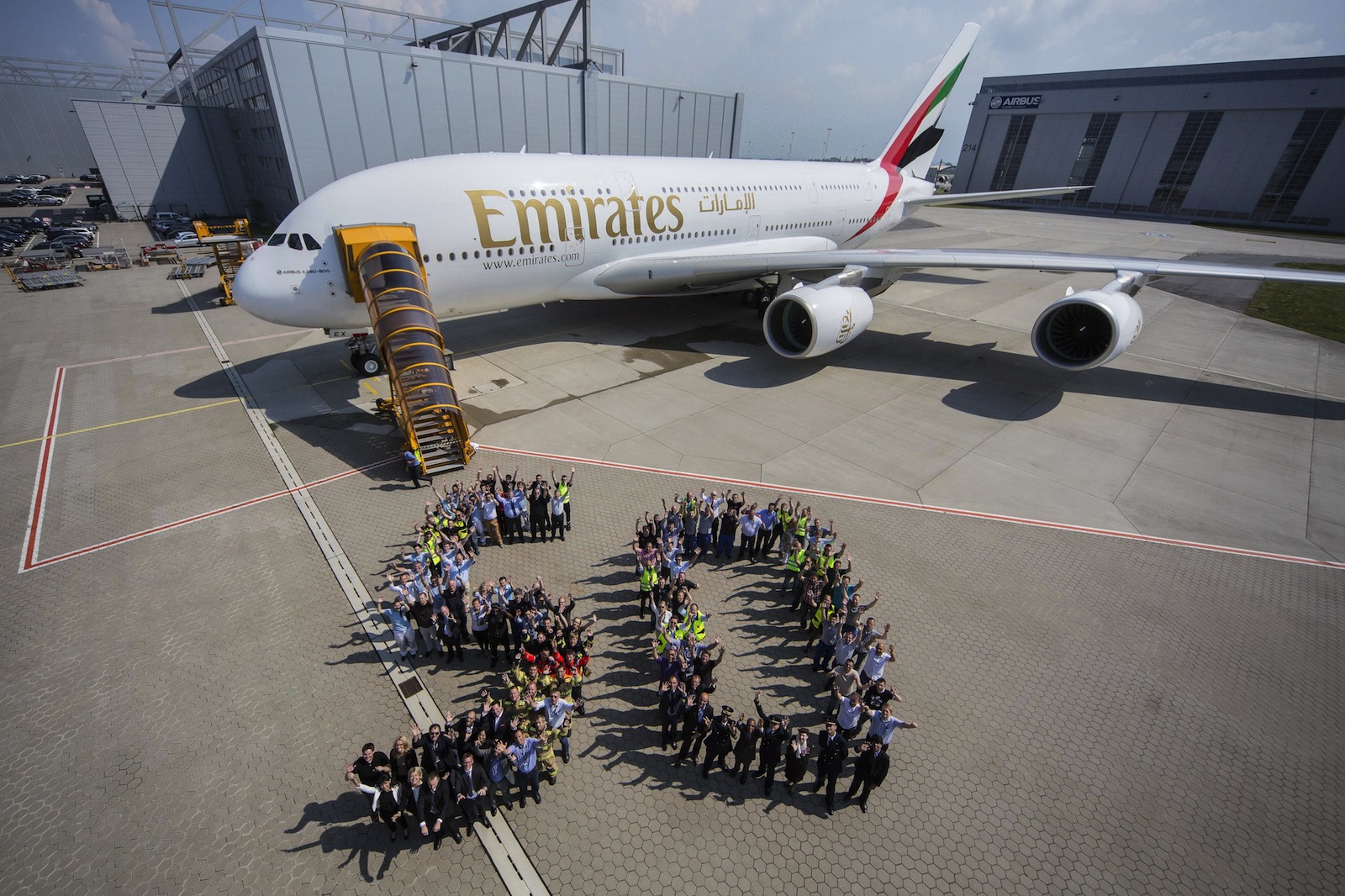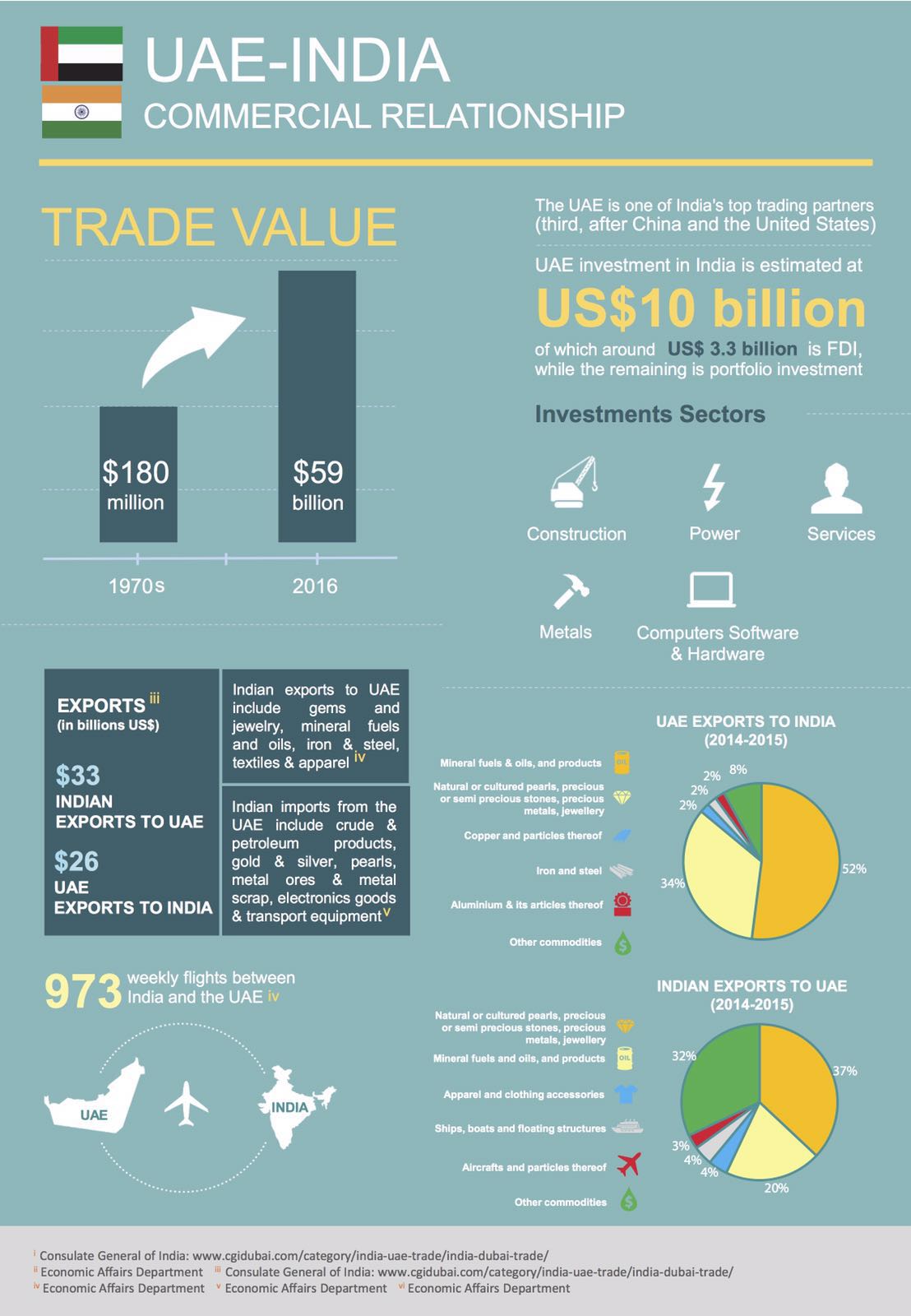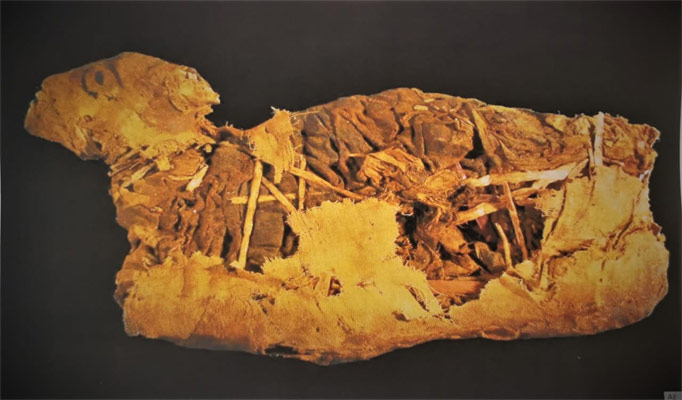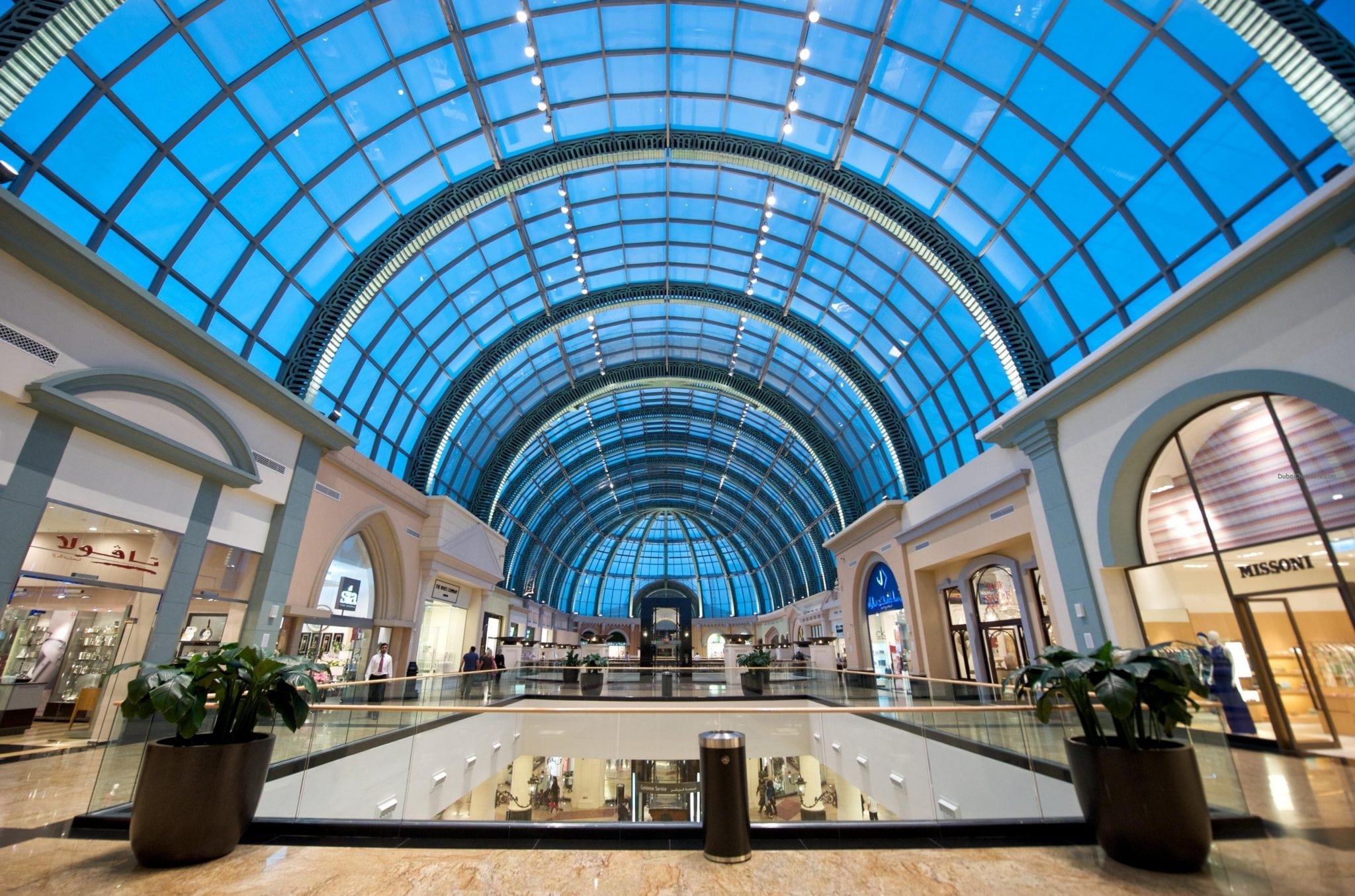One of most well-known tourist destinations in the world, Dubai is the biggest city of UAE. The city is based on the Persian Gulf's southeast coast and serves as the capital city of the Emirate of Dubai. Dubai has emerged as one of the biggest cosmopolitan cities of the world and the business hub of the Middle East.
The city is famous for its ambitious constructional projects like the Palm Islands and " The World" which are artificial islands off the coast of Dubai. Dubai's economy is mainly dependent on international trade and to a small extent on oil that is a limited resource in the city. Tourism, real estate, aviation, and financial services are also major sources of revenue in Dubai. The city is the world's 22nd most expensive city and the most expensive one in the region.
In 2014, the hotel rooms in Dubai were ranked as the second most in the world after those in Geneva. The United Arab Emirates is a Middle Eastern country that is located on the Arabian Peninsula's southeast end and is bordered by Saudi Arabia to the south and Oman to the east. The country also shares its maritime borders with Iran and Qatar. The population of UAE was 9.2 million in 2013 of which only 1.4 million were native Emiratis and the rest all expatriates. The UAE is a federation of 7 emirates that was established on December 2, 1971.
The biggest city in UAE, Dubai, is a global city and a major international aviation hub. UAE's economy is mainly reliant on the export of oil and natural gas. The Emirate of Sharjah is one of the seven emirates of the United Arab Emirates, the Islamic and cultural center of the country and the third largest emirate in the UAE. It is located on the shores of the Arabian Gulf and is a unique cultural and Islamic radiation center in the Middle East. The emirate is known for its spectacular natural land and sea landscapes, pearl fishing and shipbuilding. Sharjah has succeeded in the acquisition of a unique international touristic position with its oriental Islamic character combined with contemporariness.
It conjoins many hotels that provide distinctive services and packages for the different kinds of tourists, and restaurants varied between fast food, fancy restaurants, local dishes and foreign ones. Sharjah International Airport is considered as a promising gateway to international air transport, as well as the port that provides sea cruises. Sharjah has a wide and extended road network that makes it easy to travel inside it and to other cities as well.
The city of Sharjah overlooks the Persian Gulf and has a population of over 800,000 . It contains the main administrative and commercial centres together with an array of cultural and traditional projects, including several museums covering areas such as archaeology, natural history, science, arts, heritage, Islamic art and culture. Distinctive landmarks include two major covered souks, reflecting Islamic design, and a number of recreational areas and public parks such as Al Montazah Fun Park and Al Buheirah Corniche. The United Arab Emirates has the world's sixth largest proven oil reserves and the fifth largest natural gas reserves, making the country a critical partner and responsible supplier in global energy markets. Although a mainstay in the economy, oil exports actually account for only about one third of economic activity, as a result of aggressive government policies designed to diversify the UAE economy.
However, domestic energy consumption has continued to rise steadily with all electricity production and water desalination being generated by thermal plants, which has resulted in the UAE becoming a net importer of natural gas since 2008. Abu Dhabi, the capital of the Emirate of Abu Dhabi, is UAE's second most populous city. Abu Dhabi houses the Abu Dhabi Emiri Family and the federal government offices of the region.
The city is a modern metropolis and a major political, economic, cultural, and commercial center in the region. Like Dubai, Abu Dhabi also has a multicultural and diverse society. However, time and again, human rights organizations have heavily criticized the government for exploiting foreign workers and treating them in an improper manner. The discovery of oil in 1972 and beginning of natural gas drilling in 1990 brought Sharjah new sources of income, allowing the emirate to develop rapidly into the successful cultural and business hub that it is today. However, since Sharjah's oil and gas resources are limited, the economy has been diversified to include manufacturing, health care, environmental protection, tourism, transport and logistics as well. In recent years, the Sharjah government has established two economic free zones and increased investment opportunities in the emirate.
The Emirate of Sharjah has developed a unique reputation as a cultural, heritage and family tourist destination providing visitors with the ideal getaway at any time of the year. The Authority determines all matters relating to the control and supervision of the nuclear sector in the UAE, in particular nuclear safety and security, radiation protection and safeguards. All obligations under the relevant international treaties, conventions or agreements entered into by the UAE are carried out by FANR. The capital of the Emirate of Ajman, Ajman is the fifth biggest city in UAE. The Ruler's office, commercial markets, companies, and a large number of national and international retail shops are located in Ajman. The city is also rapidly developing as a major tourist destination in the region.
Sharjah's strategic location and rich natural resources have been major factors in the emirate's economic development. Sharjah had the first international airport in the Arabian Gulf, built by the British in 1932, and the first container port, constructed in 1976. In addition to the general trading activities, both fishing and pearling have played an important role in the Sharjah economy, but the pearling industry fell victim to strong competition from Japanese cultured pearls in the 1940s and lost its prominence.
The city of Ras Al Khaimah, the capital of the emirate, is divided into two parts by a creek. The western part, known as "old Ras Al Khaimah", consists of government departments, educational institutions, shopping malls, hotels as well as residential areas and new construction projects. The eastern part, known as Al Nakheel, houses the Emiri Court, markets, Ras Al Khaimah Exhibition Centre, hospitals and residential areas housing the majority of the city's population. Ras Al Khaimah has a rich history and was renowned for its prosperous port and its exquisite pearls, which were famous for being the whitest and roundest in the world. Sharjah is the third largest emirate in the United Arab Emirates, and is the only one to have land on both the Persian Gulf and the Gulf of Oman.
The emirate covers 2,590 square kilometres which is equivalent to 3.3 per cent of the UAE's total area, excluding the islands. The city lies some 170 km away from the UAE capital city Abu Dhabi. Economic growth across the UAE has led to massive increases in the demand for electricity.
Current estimates indicate that the domestic demand for power will more than double by 2020, even given the global economic slowdown. This culturally, intellectually and architecturally rich emirate is more than 6,000 years old. Sharjah is also the UAE's third largest emirate, after Abu Dhabi and Dubai. All the other emirates face the Persian Gulf, but Sharjah is the only one that adjoins the Arabian Gulf.
This place is so rich in culture that it was named the Cultural Capital of the Arab World in 1998 by UNESCO. You can explore this emirate's cultural aspects by visiting its famous museums located at the well-known Sharjah heritage area. Apart from the culture, though, you have many other things you can enjoy, as we'll show you here. Dubaimay be the second-largest emirate in the country, but it holds the biggest population, majority of which are expats from around the world. Dubai has a thriving business and tourism industry, having a skyline dotted by majestic buildings and towers. Here, you will find the Burj Al Arab (a 7-star hotel), the Burj Khalifa , and the luxurious Palm Trilogy islands, among many other attractions.
The smallest of the emirates, located in the north of the UAE on the Arabian Gulf coast, is Ajman. H. Sheikh Humaid bin Rashid Al Nuaimi, the emirate has a variety of important economic sectors and also offers a number of museums and castles, including the Ajman Museum, which presents artifacts of traditional life in the old Ajman Fort. Originally a small fishing and trading settlement, Dubai is now an exciting, cosmopolitan city, and a global hub for trade and finance, where traditional Arab-Islamic culture flourishes alongside the ultra-modern. It is the second largest emirate by land area after Abu Dhabi, and is ruled by His HighnessSheikh Mohammed bin Rashid Al Maktoum, the Vice President and Prime Minister of the UAE. The emirate of Sharjah comprises the city of Sharjah , and other minor towns and enclaves. The city of Sharjah, which overlooks the Persian Gulf, has a population of 519,000 .
Sharjah City borders Dubai to the south and Ajmân to the north, and the three form a conurbation. Sharjah also owns three enclaves on the east coast, bordering the Gulf of Oman. These are Kalba, Dibba Al-Hisn, and Khor Fakkan, which provide Sharjah with a major east coast port. In the Persian Gulf, the island of Sir Abu Nu'ayr belongs to Sharjah, and Abu Musa is claimed by UAE, but controlled by Iran. Sharjah has an exclave containing the village of Nahwa, located inside the Omani enclave of Madha which borders Fujairah and Sharjah.
The emirate also encompasses some important oasis areas, the most famous of which is the fertile Dhaid region, where a range of vegetables and fruits are cultivated. KEPCO, a government owned-utility, is the world's third largest nuclear energy business, with an installed nuclear generation capacity of 17,716MW as of the end of 2008. KEPCO operates 20 commercial nuclear power units as of 2009, with 8 more units currently under construction and an additional 10 units planned to be built by 2030. The development of a peaceful, civilian nuclear energy program was based on an in-depth evaluation of the UAE's future energy needs. An initial study determined that national annual peak demand for electricity is likely to rise to more than 40,000 megawatts by 2020, reflecting a cumulative annual growth rate of about 9% from 2007.
Even with adjustments to account for the worldwide economic slowdown, the projected demand is well beyond current capacity. Heritage and tradition continues to be influential within the UAE and wider Islamic and Arab culture. Sharjah itself has deep historical roots in traditional arts and crafts practices.
Trades and skills dating back to desert tribes influenced by migration practices have been handed down through the generations and continue to represent a key part of Islamic culture. In Sharjah the main crafts and trades are pottery, bridal chests, weaving, embroidery, daggers and knives, ornate carved doors, perfumes, incense and henna. Many of these crafts are still popular activities among locals today and can be found throughout the emirate. This maintenance and celebration of Sharjah's arts and crafts heritage is a key element in the cultural agenda that permeates the emirate's contemporary society.
Ras Al Khaimah is the fourth-largest emirate in the country, spanning an area of 1700 square kilometers. Notably, about 50 percent of its population are nationals, or Emiratis. Lately, the emirate has also been expanding its business and tourism industries. Among its noteworthy attractions are the Dhayah Fort, Ras Al Khaimah National Museum, and Iceland Water Park. The third largest emirate in the UAE, Sharjah is blessed with two coastlines, a picturesque landscape and pristine beaches.
But beyond that, the vibrant emirate has also developed into a dynamic business, transport, cultural and industrial hub that combines a business-friendly environment with world-class infrastructure, making it a highly attractive investment destination. The city's economy is primarily dependent on oil and natural gas. In recent times, its leaders are working hard to reduce its dependence on oil to diversify the emirate's economy, it is focusing its investment in infrastructure, tourism, and transport.
In the 18th century, Portugal and the Netherlands extended their holdings in the region but retreated with the growth of British naval power there; following a series of truces with Britain in the 19th century, the emirates united to form the Trucial States . The states gained autonomy following World War II (1939–45), when the trucial states of Bahrain and Qatar declared independent statehood. The rest were formally united in 1971, with the city of Abu Dhabi serving as the capital.
Sharjah is the third largest and third most populous city in the United Arab Emirates, which covers 2,590 square kilometres . The emirate of Sharjah borders with Dubai to the south, Ajman and Umm Al Quwain to the north and Ras Al Khaimah to the east. It is overlooks the coastline on the Persian Gulf to the west and the Gulf of Oman to the East, with the eastern Sharjah coastal towns of Kalba and Khor Fakkan. It is bordered to the south by the Emirate of Abu Dhabi and to the northeast by the Emirate of Sharjah. Dubai is a centre for regional and international trade since the early 20th century, and a major global transport hub for passengers and cargo. The richest in terms of heritage among the seven emirates of the UAE, Sharjah is the biggest patron of art, culture and history.
In 1998, UNESCO awarded Sharjah with the title of being the "Cultural Capital of the Arab World." The emirate is dotted with museums, cultural and historic heritage centres, beautiful mosques and various art galleries. Sharjah is the third largest emirate in the UAE, its largest city and its most family-friendly destination. Experience a Sharjah museum, a desert safari and a Sharjah beach — the emirate offers things to do for everyone.
The 20th century was marked by rapid development, including the establishment of the UAE's first international airport in Sharjah in 1932 and the introduction of modern schools, hospitals and telecommunications. In 1971, the federation of the United Arab Emirates was established, comprising the emirates of Sharjah, Abu Dhabi, Dubai, Ajman, Fujairah, Umm Al Quwain and, in 1972, Ras Al Khaimah. The discovery of oil in 1966 transformed the emirate and its way of life. Dubai's first oil exports in 1969 were followed by a period of rapid development that laid the foundations for today's modern society.
In the 1980s and early 1990s, Dubai took a strategic decision to emerge as a major international-quality tourism destination. Investments in tourism infrastructure have paid off handsomely over the years. Whilst recognizing the success of the oil sector, Abu Dhabi is working hard to reduce its hydrocarbons reliance and broaden the emirate's economy. Investment in infrastructure, tourism, transport, health and education is continuing and in line with the government's 2030 urban plan.
Tourism is playing in integral role in Abu Dhabi's economic development, with the emirate targeting 2.3 million hotel guests by 2012. Major investment in new luxury resorts and business hotels is underway. Sharjah Public Transportation Corporation is organizing and supervising the operations of taxis in Sharjah Emirate. They cover all parts of the Emirate and cities, including shopping centres, residential areas and airport. The city is a centre for culture and industry, and alone contributes 7.4% of the GDP of the United Arab Emirates. The city covers an approximate area of 235 km2 and has a population of over 800,000 .
The sale or consumption of alcoholic beverages is prohibited in the emirate of Sharjah without possession of an alcohol licence and alcohol is not served in Sharjah hotels, restaurants or other outlets due to the Muslim majority in the area. This has helped Sharjah increase the number of Islamic tourists who visit the country.Sharjah has been officially named as a WHO healthy city. The 2016 edition of QS Best Student Cities ranked Sharjah as the 68th best city in the world to be a university student. Sharjah is regarded as the cultural capital of the UAE, and was the Islamic culture capital in 2014.
What Is The Third Largest Emirate In UAE Following this strategy, ENEC selected a nuclear experienced managing agent to support its development and solicitation of bids for the nuclear power program. Key positions within the organization were filled with experienced nuclear contractors and other key positions are supported with nuclear experts. In addition, ENEC was able to tap into the experienced professionals from the UAE's long-established oil and gas, energy and mega-project industries to build its management ranks. Central to the UAE's approach to developing a nuclear energy program has been the importance of building a qualified workforce in the short and long term. The UAE has started the transition to curb emission of greenhouse gases, focusing on natural gas and developing peaceful civilian nuclear energy to meet significant power generation demands and water desalination requirements. As a result of this study, the UAE is pursuing a peaceful, civilian nuclear energy program that upholds the highest standards of safety, security, nonproliferation and operational transparency.
Government officials, nonproliferation advocates, and energy experts worldwide have called the UAE approach a gold standard for countries interested in exploring nuclear energy for the first time. The UAE exports more than 40% of its crude oil to Japan, making it the UAE's largest customer. The UAE is a net importer of natural gas, and gas exports are primarily to Japan, the world's largest buyer of liquefied gas. The Dolphin Project, which began importing natural gas from Qatar to the UAE by pipeline, in 2007, was the first major cross-border energy deal between Gulf countries. Sharjah, the cultural capital of the Arab world, is the third largest and most populous city in the United Arab Emirates, and a leading center of education in the Middle East. The Emirate of Sharjah is renowned for its vibrant multicultural ambiance, diverse museums that display both rich cultural heritage and contemporary artwork, and a charming blend of historical and modern architectural sites.

























No comments:
Post a Comment
Note: Only a member of this blog may post a comment.